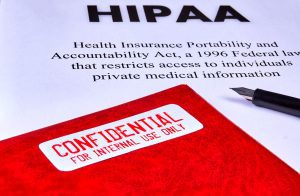Insurance Eligibility and Benefit Verification: A Breakdown
Understanding the insurance eligibility and benefit verification process is crucial for healthcare providers and patients to navigate the complexities of healthcare coverage effectively. By verifying insurance eligibility and benefits upfront, patients can prevent financial surprises and make informed decisions about their healthcare options.
This page highlights how verifying insurance coverage beforehand can help patients avoid out-of-pocket expenses and assist healthcare providers in accurately billing insurance companies, ultimately benefiting both parties. Patients should proactively provide accurate insurance information to healthcare providers to facilitate a smooth verification process and ensure coverage for medical services. Streamlining insurance eligibility verification enhances the patient’s experience by reducing delays, improving financial transparency, and fostering trust between patients and healthcare providers.
The process healthcare providers use to confirm a patient’s insurance coverage and benefits before providing medical services.
 Verifying Coverage
Verifying Coverage
When we verify insurance coverage before medical services, we ensure smooth billing processes later. It prevents unexpected costs for patients and streamlines administrative tasks for providers.
Steps in the Process
We start by collecting patient information like insurance cards and personal details. Then, we contact the insurance company to confirm coverage levels, copays, deductibles, and any prior authorizations needed. After that, we document all details accurately in the patient’s records.
Impact on Patient Care
By verifying insurance eligibility upfront, we enhance patient care experiences. Patients feel more secure knowing their financial responsibilities beforehand. This transparency fosters trust between us as healthcare providers and our patients.
Financial Outcomes
Verifying benefits early on reduces the risk of denied claims due to lack of coverage. This proactive approach helps us avoid revenue loss and maintain a steady cash flow in our practice.
Why is It Important?
I would like to ensure the provider receives payment for services.
When verifying insurance accurately, we secure timely payment for healthcare services rendered to patients. This process helps us avoid any billing complications arising after providing medical care. By ensuring insurance eligibility and benefits upfront, we contribute to the financial stability of healthcare facilities.
Prevents unexpected medical bills for the patient.
Verifying insurance eligibility and benefits beforehand helps prevent unexpected medical bills for patients. This proactive approach mitigates surprise costs that could catch patients off guard. Ultimately, it leads to enhanced patient satisfaction, trust in healthcare providers, and reduced financial stress related to healthcare expenses.
- Reduces surprise costs
- Enhances patient satisfaction
- Minimizes financial stress
Provides transparency into the patient’s financial responsibility (copays, deductibles, etc.).
What it involves:
Eligibility Verification: Confirms the provided insurance plan actively covers the patient.
Verifying active insurance coverage status is crucial to avoid service denials later on. We check this to ensure smooth service delivery.
It ensures patient eligibility for services and safeguards against unexpected costs for patients. It helps us provide accurate information.
We meticulously verify insurance details before proceeding with any services to prevent service denials due to coverage issues.
Benefits Verification: Determines the specifics of the patient’s planned service(s) coverage. This includes:
Identifying covered services under the insurance plan is essential for planning patient treatments effectively. It guides our service recommendations.
Estimating out-of-pocket expenses accurately helps us communicate financial responsibilities to patients, fostering transparency in our interactions.
Understanding pre-authorization requirements for services ensures that we comply with insurance protocols, avoiding delays in treatment provision.
Coverage details (Is the service covered?)
Confirming service inclusion in the insurance plan prevents misunderstandings and potential coverage disputes. This clarity benefits both us and our patients.
Avoiding service denials due to lack of coverage is vital to maintaining trust and preventing unexpected patient financial burdens.
Providing clarity on covered services to patients empowers them to make informed decisions about their healthcare without confusion or surprises.
Out-of-pocket costs (Copays, coinsurance, deductibles)
Calculating patients’ financial responsibilities accurately allows us to assist patients in budgeting appropriately for their healthcare needs.
Explaining cost-sharing components like copays, coinsurance, and deductibles helps patients understand their financial obligations clearly.
Helping patients plan for out-of-pocket expenses enables them to prepare financially for any upcoming medical services they may need.
Pre-authorization requirements (Does the service need approval beforehand?)
Understanding the necessity of pre-authorization for certain services helps us streamline processes and avoid unnecessary delays.
Ensuring compliance with insurance protocols regarding pre-authorization is essential to maintain a seamless patient experience.
Preventing service delays due to lack of pre-authorization enhances patient satisfaction and ensures timely access to necessary healthcare services.
How it’s done:
Electronic methods (preferred):
We appreciate the efficiency of electronic verification processes in swiftly confirming insurance eligibility. Our data is safeguarded, ensuring privacy compliance and security. Utilizing electronic systems helps us streamline insurance verification for quick responses.
Standardized electronic transactions are essential for maintaining compliance with HIPAA regulations. We prioritize adhering to these guidelines to ensure the confidentiality and security of patient data. These standardized electronic transactions facilitate secure information transfer between entities.
Standardized electronic transactions as per HIPAA regulations:
- Adhering to HIPAA guidelines for electronic data exchange
- Ensuring patient data confidentiality and security
- Facilitating secure information transfer between entities
Manual methods:
When exploring traditional verification approaches, we encounter various challenges associated with manual verification. Comparing manual versus electronic verification processes reveals the inefficiencies of manual methods. We understand the importance of transitioning towards more automated systems for streamlined operations.
Verifying information through mail or fax (less common due to slow turnaround):
While verifying information through mail or fax was once common, we recognize the limitations and delays associated with these methods. The decreased use of manual verification methods can be attributed to their slower turnaround times and inefficiencies. Timely verification is crucial for ensuring smooth processes and prompt service delivery.
Benefits:
Streamlined billing and revenue cycle management for providers
We improve billing accuracy by verifying insurance eligibility before providing services. This process ensures enhanced revenue cycle efficiency for healthcare providers. We reduce claim rejections and streamline the billing process by minimizing billing errors.
Improved financial transparency for patients
We empower patients by providing clear financial information regarding their insurance coverage and benefits. Transparent billing practices help build trust with patients and enhance their satisfaction levels. Precise financial details ensure that patients understand their financial responsibilities upfront.
Minimize the Risk of Denied Insurance Claims and Unpaid Medical Bills with Effective Eligibility Verification.
Additional points:
Patient insurance ID cards are not a guarantee of eligibility. Verification is crucial.
When it comes to insurance eligibility, we must understand that possession of an insurance card does not always signify coverage. Verifying eligibility through thorough checks is vital beyond merely glancing at the card. By doing so, we can prevent billing errors and ensure patients receive the appropriate benefits they are entitled to.
It’s easy to make assumptions based on the presence of an insurance card, but this can lead to complications down the line. We must conduct comprehensive eligibility verification by cross-referencing details with the insurance provider. This meticulous approach helps us avoid misunderstandings and streamline the billing process effectively.
In our practice, we always emphasize the need for accurate and detailed eligibility verification to avoid discrepancies in billing. By verifying coverage comprehensively, we safeguard against denied claims and ensure that our patients receive the maximum benefits under their insurance plans.
We verify eligibility at least 48 hours before a patient’s appointment is recommended.
We recommend conducting eligibility verification at least 48 hours before a patient’s appointment to enhance our operational efficiency. This timeframe allows us to address any coverage issues that may arise quickly. By verifying early, we can proactively resolve discrepancies and provide our patients with a seamless experience.
Verifying eligibility well in advance serves multiple purposes, including minimizing last-minute disruptions during appointments. When we verify eligibility ahead of time, we have sufficient leeway to rectify any issues that may affect coverage. This proactive approach ensures that our patients’ visits proceed smoothly without delays or complications.
In our experience, verifying eligibility in advance has significantly improved appointment efficiency across our practice. Ensuring all necessary checks are completed before appointments, we can focus on delivering quality care without interruptions or distractions related to insurance coverage matters.
Summary
We’ve delved into the crucial process of insurance eligibility and benefit verification in healthcare. Patients and medical facilities must understand how providers confirm coverage before treatment. By grasping the intricacies, we can appreciate the efficiency and benefits this system brings to the healthcare industry. Verifying insurance not only streamlines processes but also ensures patients receive the necessary care without financial barriers. It’s a fundamental step that positively impacts everyone involved.
Let’s take charge of our healthcare journey by staying informed about insurance verification processes. Proactively understanding our coverage can lead to smoother medical experiences and better outcomes. Empowered with this knowledge, we can navigate the healthcare landscape more confidently, ensuring our well-being remains a top priority.

